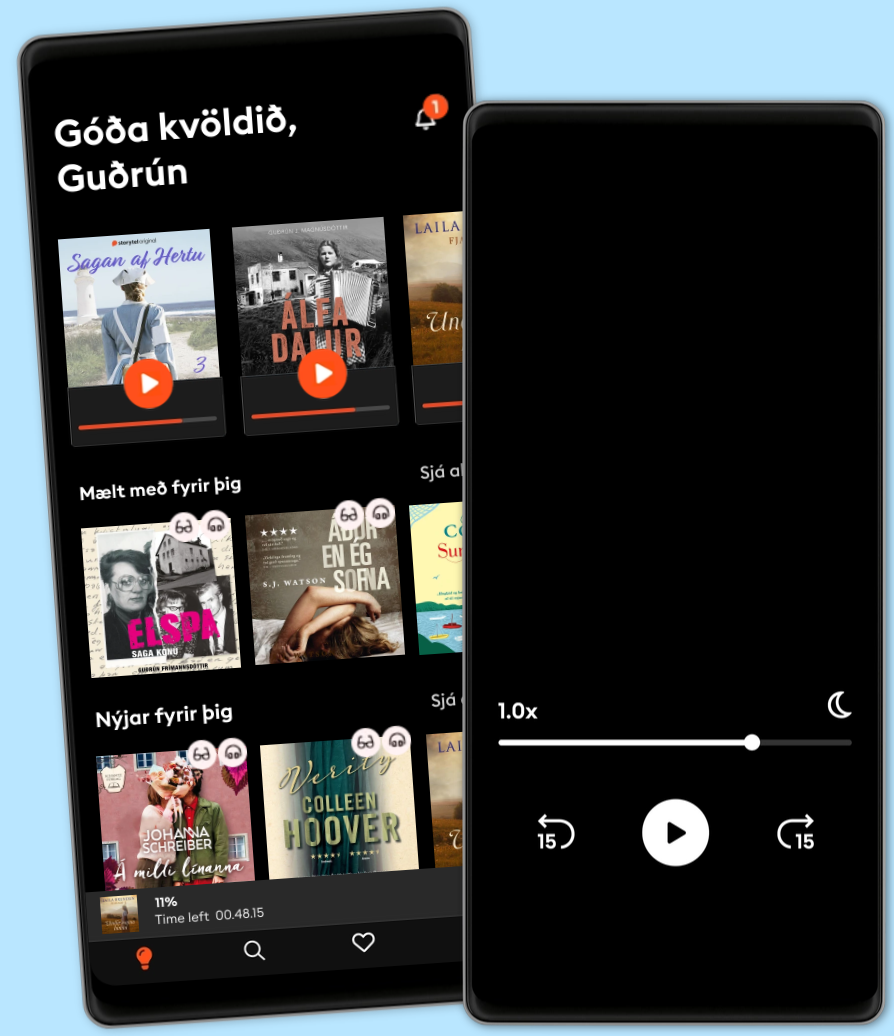Hlustaðu og lestu
Stígðu inn í heim af óteljandi sögum
- Lestu og hlustaðu eins mikið og þú vilt
- Þúsundir titla
- Getur sagt upp hvenær sem er
- Engin skuldbinding

Classical Art: A Life History from Antiquity to the Present
- Höfundur
- Útgefandi
How did the statues of ancient Greece wind up dictating art history in the West? How did the material culture of the Greeks and Romans come to be seen as "classical" and as "art"? What does "classical art" mean across time and place? In this ambitious, richly illustrated book, art historian and classicist Caroline Vout provides an original history of how classical art has been continuously redefined over the millennia as it has found itself in new contexts and cultures. All of this raises the question of classical art's future.
What we call classical art did not simply appear in ancient Rome, or in the Renaissance, or in the eighteenth-century Academy. Endlessly repackaged and revered or rebuked, Greek and Roman artifacts have gathered an amazing array of values, both positive and negative, in each new historical period, even as these objects themselves have reshaped their surroundings. Vout shows how this process began in antiquity, as Greeks of the Hellenistic period transformed the art of fifth-century Greece, and continued through the Roman empire, Constantinople, European court societies, the neoclassical English country house, and the nineteenth century, up to the modern museum.
A unique exploration of how each period of Western culture has transformed Greek and Roman antiquities and in turn been transformed by them, this book revolutionizes our understanding of what classical art has meant and continues to mean.
© 2018 Princeton University Press (Rafbók): 9781400890279
Útgáfudagur
Rafbók: 29 maj 2018
Aðrir höfðu einnig áhuga á...
- Art History: A Very Short Introduction: A Very Short Introduction, 2nd edition Dana Arnold
- The Renaissance: Studies in Art and Poetry Walter Pater
- History of Art Introbooks Team
- Rembrandt's Roughness Nicola Suthor
- Broad Strokes: 15 Women Who Made Art and Made History (in That Order) Bridget Quinn
- I Like Art: Romanticism Margaux Stanitsas
- The Lives of the Artists Giorgio Vasari
- A History of Art History Christopher S. Wood
- A Little History of Art Charlotte Mullins
- Women in the Picture: Women, Art and the Power of Looking Catherine McCormack
- Lykillinn Kathryn Hughes
4.4
- Völundur Steindór Ívarsson
4.3
- Hundeltur Torill Thorup
4.3
- Næsta stúlkan Carla Kovach
4.1
- 17 ástæður til að drepa Unnur Lilja Aradóttir
4
- Lára missir tönn Birgitta Haukdal
4.5
- Lára lærir að lesa Birgitta Haukdal
4.1
- Dauðinn einn var vitni Stefán Máni
4.4
- Atlas: Saga Pa Salt Lucinda Riley
4.7
- Lára lærir á hljóðfæri Birgitta Haukdal
4.3
- Myrkraverk í miðbænum Birgitta H. Halldórsdóttir
3.8
- Hundrað dagar í júlí Emelie Schepp
4.3
- Blóðmeri Steindór Ívarsson
4.4
- Í þjónustu hins illa Torill Thorup
4.3
- Óvæntur ferðafélagi Eiríkur Bergmann
4.3
Veldu áskrift
Hundruðir þúsunda raf- og hljóðbóka
Yfir 400 titlar frá Storytel Original
Barnvænt viðmót með Kids Mode
Vistaðu bækurnar fyrir ferðalögin
Unlimited
Besti valkosturinn fyrir einn notanda
1 aðgangur
Ótakmörkuð hlustun
Engin skuldbinding
Getur sagt upp hvenær sem er
Family
Fyrir þau sem vilja deila sögum með fjölskyldu og vinum.
2-6 aðgangar
100 klst/mán fyrir hvern aðgang
Engin skuldbinding
Getur sagt upp hvenær sem er
2 aðgangar
3990 kr /á mánuðiÍslenska
Ísland